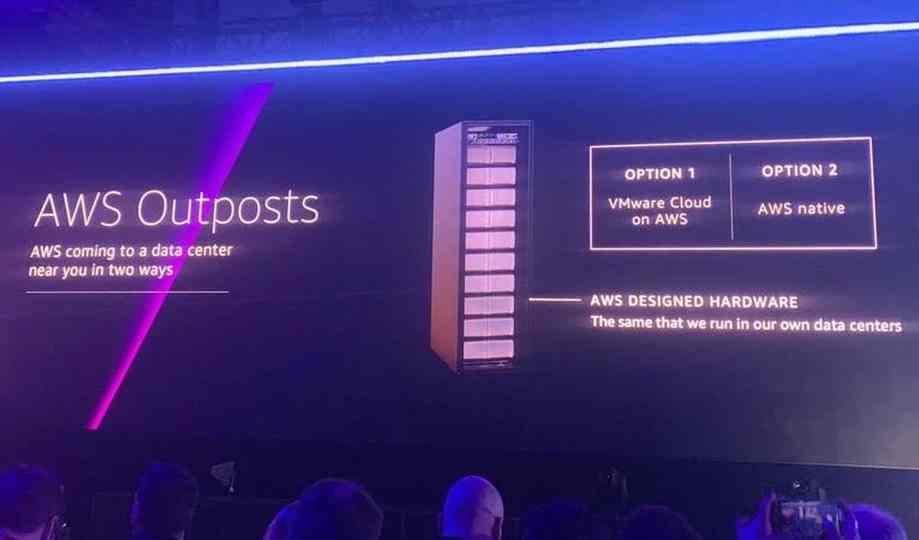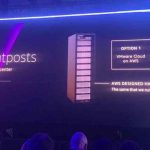Amazon launches AWS Outposts, an on-premise data center, that should get legacy hardware vendors like Cisco, HPE and Dell worried

Cloud technologies continue transform information technology (IT) as we know it. Gone are the days of investing in legacy hardware that cost millions of dollars. The cloud is leveling the playing field by lowering upfront and IT capital expenditure (CAPEX) cost for organizations so they can focus on their core business. Even with all the benefits, most organizations are still slow to embrace the cloud. Instead, some opt for hybrid cloud. Now, Amazon wants to give organizations the best of the two worlds. The company announced the launch of a new service called Amazon Web Services (AWS) Outpost to take on traditional hardware vendors Cisco, HPE and Dell. The service will give business the ability to run AWS infrastructure and services on-premises to deliver a truly consistent hybrid experience.
Amazon cloud chief Andy Jassy made the announcement yesterday at the AWS re:Invent conference in Las Vegas. AWS Outposts is a fully managed and configurable compute and storage racks built with AWS-designed hardware, that allow customers to run compute and storage on-premises, while seamlessly connecting to the rest of AWS’s broad array of services in the cloud.
Over the past several years, AWS has delivered services like Amazon Virtual Private Cloud (Amazon VPC), AWS Direct Connect, and Amazon Storage Gateway to make it easier for customers who want to run their on-premises datacenters alongside AWS. In 2017, AWS collaborated with VMware to introduce VMware Cloud on AWS, giving the vast majority of companies who are virtualized on VMware the ability to use the same on-premises VMware tools that they had been using for years to manage their infrastructure on AWS.
Still, some customers have certain workloads that will likely need to remain on-premises for several years such as applications that are latency sensitive and need to be in close proximity to on-premises assets. These customers would like to be able to run AWS compute and storage on-premises, and also easily and seamlessly integrate these on-premises workloads with the rest of their applications in the AWS Cloud. Early attempts by other vendors have fallen short – unable to provide the ability to use the same APIs, the same tools, the same hardware, and the same functionality across on-premises and the cloud, therefore unable to deliver a truly consistent hybrid experience to customers.
AWS Outposts solves these challenges by delivering racks of AWS compute and storage, with the ability to run services like Amazon Elastic Compute Cloud (Amazon EC2) and Amazon Elastic Block Store (Amazon EBS) on this AWS-designed infrastructure. AWS Outposts will initially come in two variants. First, for customers who want to use the same VMware control plane and APIs they’ve been using to run their infrastructure, they will be able to run VMware Cloud on AWS locally on AWS Outposts. Second, for customers who prefer the same exact APIs and control plane they’re used to running in AWS’s cloud, but on-premises, they can use the AWS native variant of AWS Outposts.
In both cases, AWS will deliver the racks to customers, install them (if customers prefer), and handle all maintenance and replacement of racks. These AWS Outposts will be an extension of a customer’s Amazon VPC (in the closest AWS Region to each customer), and customers can seamlessly connect from their AWS Outposts to the rest of their applications in AWS or any other AWS service.
“Customers are telling us that they don’t want a hybrid experience that attempts to recreate a stunted version of a cloud on-premises, because it’s perpetually out of sync with the cloud version and requires a lot of heavy lifting, managing custom hardware, different control planes, different tooling, and manual software updates. There just isn’t a lot of value in that type of on-premises offering and that’s why these solutions aren’t getting much traction,” said Andy Jassy, CEO of AWS. “So we started with what our customers were asking for and worked backwards. They told us they want an extension of their AWS or VMware Cloud on AWS environment on-premises, using the same hardware we’re using, the same interfaces, the same APIs, the same instant access to the latest AWS capabilities the minute they become available, and they don’t want to manage hardware or software. So, we tried to reimagine what customers really wanted when running in hybrid mode, and developed AWS Outposts.”
“VMware Cloud on AWS broke the barriers between the data center and the cloud by combining the best of the private cloud and public cloud in the AWS cloud,” said Pat Gelsinger, chief executive officer, VMware. “Today we expand our strategic collaboration with AWS to provide our mutual enterprise customers with more choice and options as they extend their hybrid cloud environments to drive agility, simplicity, security, and full infrastructure interoperability. Our new offerings, VMware Cloud on AWS Outposts and VMware Cloud Foundation for EC2, further extend VMware’s vision for consistent infrastructure and consistent operations from the data center to the cloud to the edge.”

